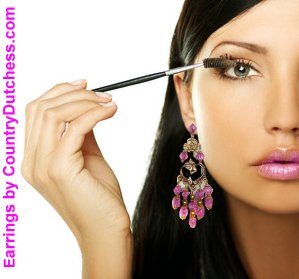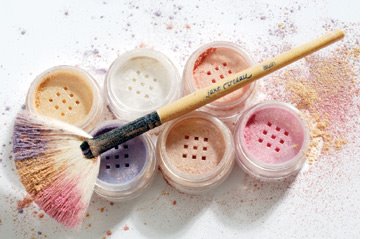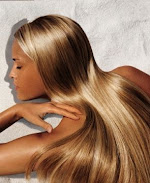Skin care companies add preservatives to keep bacteria out of products. But a new medical review questions whether many “over preserve” products – and in the process increase serious health risks for women. Here’s what you need to know. – By Colette Bouchez
 If you’ve ever developed a red itchy rash – or even a case of hives – after using a skin cream, body lotion, a shower gel or even a foundation, then you’ve already come in contact with “Contact Dermatitis” – a type of allergic skin reaction that often develops in response to chemical preservatives used to keep these products fresh on the shelf.
If you’ve ever developed a red itchy rash – or even a case of hives – after using a skin cream, body lotion, a shower gel or even a foundation, then you’ve already come in contact with “Contact Dermatitis” – a type of allergic skin reaction that often develops in response to chemical preservatives used to keep these products fresh on the shelf.Now a new medical review out of Denmark claims so many manufacturers are now overloading their products with these questionable chemicals, the risk of getting a reaction grows more likely every day.
" Allergy to preservatives is one of the main reasons for contact eczema caused by cosmetics. As development and elicitation of contact allergy is dose dependent, the over preservation of cosmetics potentially leads to increased incidences of contact allergy, “ says study author Michael Dyrgaard Lundov, a researcher from the Department of Dermatology, National Allergy Research Centre, Gentofte University Hospital in Denmark. His research was just published in the journal Contact Dermatitis.
But while there are some 50 approved preservatives available to help keep these and other harmful pathogens under control, the new review also found the market is dominated by a just a few: parabens, formaldehyde, formaldehyde releasers, metylchloroisothiazolinone, and methylisothiazolinone.
As irritating as contact dermatitis can be experts like Vassar’s Dr. Janet Gray say they are less concerned about skin rashes and localized allergies then they are about the potential of long term health consequences linked to overdosing – including an increased risk of cancer.
"The evidence may not be as definitive as some would like, but there are some strong associations suggesting women, particularly younger women, routinely exposed to some of these ingredients may increase their risk of developing breast cancer later in life," says Gray, who, together with experts from the University of Pittsburgh Cancer Institute compiled a report on what we know thus far about the environmental links to breast cancer.
But that may be easier said than done. Determining the threshold at which bacteria does get out of hand is going to require some serious – and expensive – medical testing. And right now, it appears as if manufacturers would simply rather over-dump then pay the price of discovering how much of these chemicals are really necessary to strike a balance.
So what can you do in the meantime? Certainly, many natural products contain far less harmful preservatives - so that’s one shopping option. You can also cut down on some exposures by making some simple switches - from a shower gel or cream, to a bar of soap for example.
But in the end cancer prevention experts like Julia Smith, MD says avoiding one jar of face cream or one tube of foundation isn't going to make as much difference as how you live your life overall.
“Ultimately it’s going to be your cumulative exposure to all chemical and environmental toxins that matters most, “say Smith, director of the Lynne Cohen Breast and Ovarian Cancer Prevention Center at the NYU Cancer Center in New York City.
So, in this respect Smith says cut down on exposures when and where you can , eliminate those products that are not important to you, then use the products you really think you need without excess fear or worry.
"You do what you can, and hope it might make a positive difference in your life”, says Smith.
For more free tips on how choosing safer cosmetics, visit RedDressDiary.com - The destinatation for Fabulous Women Over 40!
You might also enjoy reading:
Mineral Makeup - UNCOVERED!You might also enjoy reading:
Fragrance Allergies Cause More Than Sneezing!
Copyright by Colette Bouchez 2009 - All Rights Reserved.
In addition to US Copyright, the text of this RedDressDiary article is licensed under a Creative Commons Attribution-ShareAlike 3.0 License. All formatting and style elements of this page are not available under this license, and Colette Bouchez retains all rights in those elements.
In addition to US Copyright, the text of this RedDressDiary article is licensed under a Creative Commons Attribution-ShareAlike 3.0 License. All formatting and style elements of this page are not available under this license, and Colette Bouchez retains all rights in those elements.




































Thanks for the post, Colette.
ReplyDeleteI have also read lately that some of these preservatives actually encourage the breakdown of our skin, aging us faster.
Do you know about Skin Deep, the Environmental Working Group's database for safe cosmetics? It's a world of help for me.
I just bought the Marie Veronique creme de soleil; it's nonmicronized zinc, which supposedly is better for us than the micronized kind with Titanium dioxide in it...
I also bought a cleanser line I love, featured in Body and Soul magazine; it's on KZMface.com.
Well scary! I love mineral makeup and mineral sunscreens. I'm also very careful about not using products that have known irritants (such as alcohol, witch hazel and sodium lauryl sulfate).
ReplyDelete